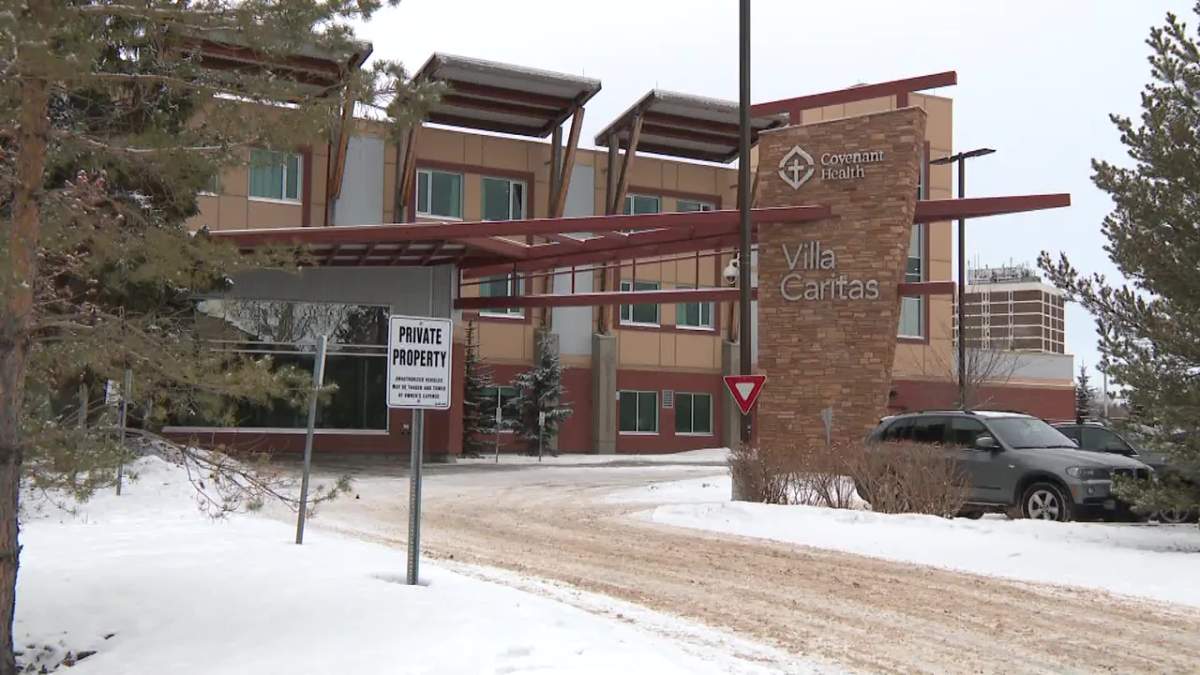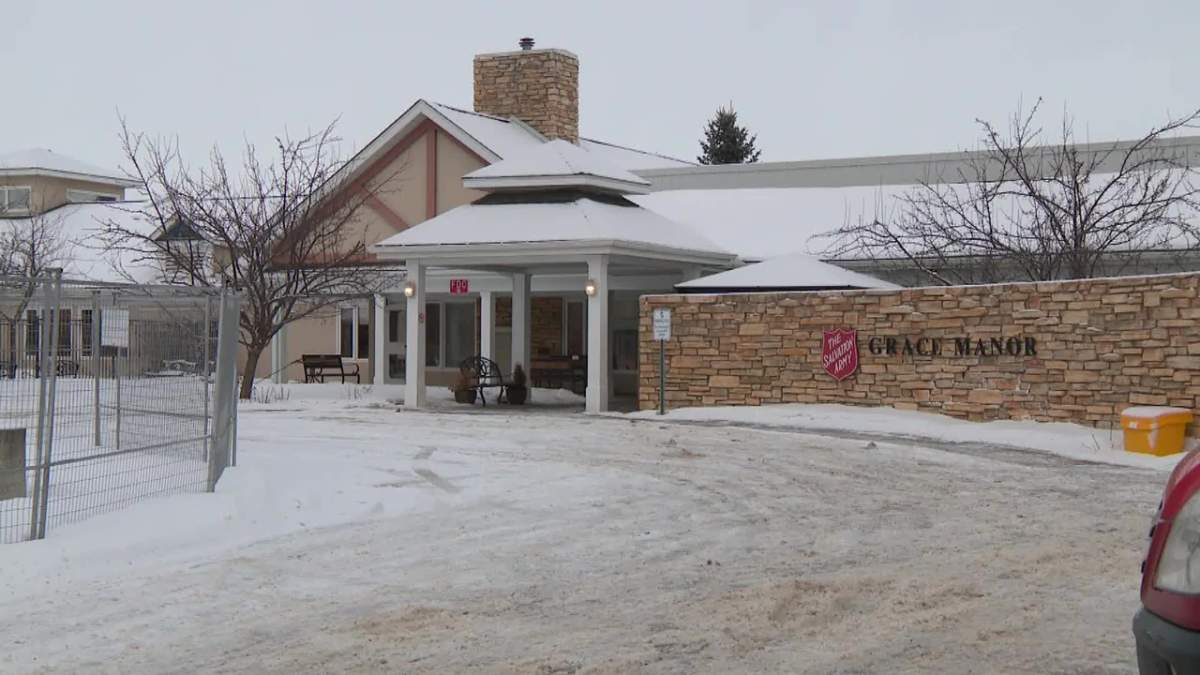An outbreak at a geriatric psychiatry facility in west Edmonton has a COVID-19 outbreak so severe that 85 per cent of patients have tested positive since Jan. 9.

The Covenant Health Villa Caritas has 142 patients and 120 have recently caught COVID-19.
Declining an interview, Covenant Health wrote that the facility is closed to visitors except in end-of-life scenarios.
“We are doing everything we can to contain transmission,” the statement read. Three patients have already died.
In addition, 35 staff have tested positive.
“Staffing continues to be a challenge and we are deploying all measures necessary to ensure quality of care is maintained,” Covenant wrote.
Villa Caritas may have one of the most severe outbreaks, but it’s not alone.
In total, Alberta Health reported 123 acute, long-term and supportive living facilities in the Edmonton zone in outbreak status, as of Jan. 25. That means at least two positive COVID cases among residents and staff.
That’s a huge spike from Dec. 21, when there were just seven outbreaks in those facilities.
Global News reached out to multiple care providers with facilities on the outbreak list, including Capital Care, the Greater Edmonton Foundation, Lifestyle Options, Good Samaritan Society, Salvation Army, Shepherd’s Care and Chartwell Residences.
Only the last four agreed to answer questions and only two took part in interviews.
In a statement, Chartwell wrote their “COVID response has included the hiring of more than 7,100 new staff and sourcing over 15 million pieces of personal protective equipment, with many protocols adopted before required by public health authorities.

“The current Omicron variant has necessitated heightened efforts to provide extra infection-control vigilance, and assistance and support in response to new precautionary public health directives.”
Shepherd’s Care responded via email Wednesday.

Get weekly health news
“As a learning organization, Shepherd’s Care Foundation has analyzed and implemented learnings from previous COVID-19 waves,” said president and CEO Shawn Terlson.
The foundation said it is still using a 10-day isolation period for its staff.
“We believe the larger proportion of staff cases at this point is a result of the very high community spread,” the statement read.
In terms of visitation, that’s currently being restricted to designated support people, who must be fully vaccinated and wear KN95 or surgical masks, as well as a face shield.
“Shepherd’s Care is in contact with our families, including regular written and telephone updates. Most families are choosing not to visit in person at this time, or are choosing to visit through technology instead of in person.”
Considering the high transmissibility of Omicron and the number of active cases in the community, many care homes are reporting just a handful of cases, including the Salvation Army.
“We’ve been able to limit spread through a strict adherence to the recommendations from Alberta Health Services and public health,” said Major Jamie Locke, public relations divisional secretary for the Salvation Army in Alberta and Northern Territories.
He said the biggest challenge is staffing.
“They’re beginning to feel tired. There is a sense of weariness among the people that we have working for us, and I would imagine in all health-care facilities.”
Locke, like every other care home provider Global News spoke with, expressed his gratitude for those working through the pandemic in all capacities.
He says many have been taking on tasks that aren’t technically part of their typical duties, as needed to keep everyone safe.

“We’ve also had some great success in partnering with other agencies in order to bring on temporary staff to help us through when there have been shortages,” Locke said.
The Good Samaritan Society is also reporting outbreaks at 13 out of 49 facilities province-wide.
So far, the numbers are much smaller than in previous waves and, according to CEO Dr. Katherine Chubbs, less severe.
“We’re not seeing the same impact on people’s health overall, so people are generally not getting as ill,” Chubbs said.
She attributes that to vaccinations and also things like ever-evolving personal protective equipment standards.
“The pandemic, if you want to see what good came out of it, it really has turned people’s attention on how to provide safe environments,” Chubbs explained.
For example, she said residents and families with Good Samaritan decided they wanted to put restrictions on who’s allowed inside.
“All homes determined that they wanted to have vaccinated visitors, so that’s what we’ve got in place.”
Good Samaritan also increased its supply of iPads for virtual visits. Chubbs said now that’s rarely something they hear complaints about.
She noted staff are human and are doing their best to lift everyone’s quality of life despite the rapidly-changing protocols of the pandemic.
“Make no mistake, it’s not normal, it’s not the way it used to be. We’re very much looking forward to getting back to where it was before COVID.”















Comments